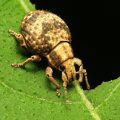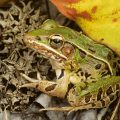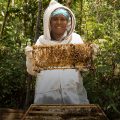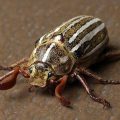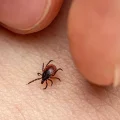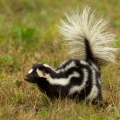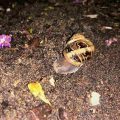Ghost ants, scientifically known as Tapinoma melanocephalum, are tiny insects that can often go unnoticed due to their pale color and small size. These ants are nonaggressive and rarely bite unless their nest is threatened. Even when they do bite, the discomfort is minimal and there is usually little to no evidence of a reaction.
One of the reasons why ghost ants may find their way into our homes is because they are attracted to the food and water sources that we provide. These ants are constantly searching for nourishment, and our homes offer a plentiful supply. They are also looking for a suitable place to establish their nests, and the sheltered environment of a house can be an ideal location for them.
It is believed that ghost ants are originally from tropical regions, possibly originating from Africa or Asia. This may explain their preference for warmer climates and their ability to thrive in indoor environments. Their ability to adapt and survive in different conditions has contributed to their success as a species.
One of the challenges with ghost ants is their ability to contaminate food. These tiny insects can easily access our pantries and cabinets, making it important to store food in airtight containers to prevent contamination. Ghost ants can walk on walls, ceilings, and even upside down, making it difficult to keep them out of our food storage areas.
Controlling ghost ants can be a challenging task. Their small size allows them to easily access hard-to-reach areas, and their ability to establish multiple nests can make it difficult to completely eradicate them. However, there are steps that can be taken to minimize their presence.
Regularly cleaning and maintaining a clean environment can help deter ghost ants. Wiping down surfaces, sweeping floors, and promptly cleaning up spills or crumbs can make your home less appealing to these pests. Additionally, sealing any cracks or gaps in walls, windows, and doors can help prevent their entry.
If an infestation becomes a persistent problem, it may be necessary to seek professional pest control services. These experts have the knowledge and tools to effectively manage ghost ant populations and prevent future infestations.
Ghost ants are small, nonaggressive insects that are attracted to the food and water sources in our homes. While their bites are usually harmless and infrequent, they can pose a threat to food hygiene. Taking preventative measures, such as maintaining a clean environment and sealing entry points, can help minimize their presence. If an infestation persists, professional pest control services may be necessary.
Are Ghost Ants Harmful?
Ghost ants are not considered harmful to humans. They do not have stingers, so they cannot sting. However, they are capable of biting if their nest is threatened. The bites are generally not painful and may go unnoticed. These ants are nonaggressive and only bite as a defensive measure. It is important to note that their bites do not pose any health risks to humans.
The main concern with ghost ants is their potential to contaminate food. These ants are known to invade homes and buildings in search of food sources. They are attracted to sweet and greasy foods, and can easily contaminate stored food items. This can be a nuisance, especially in kitchen areas.
To prevent contamination, it is important to keep food storage areas clean and properly sealed. Regularly cleaning up spills and crumbs can help reduce the attractiveness of your home to ghost ants. Additionally, sealing cracks and crevices in walls and windows can help prevent their entry into your living space.
While ghost ants are not harmful in terms of health risks or aggressive behavior, they can be a nuisance due to their potential to contaminate food. Taking preventive measures such as proper food storage and maintaining a clean living environment can help minimize the presence of ghost ants.
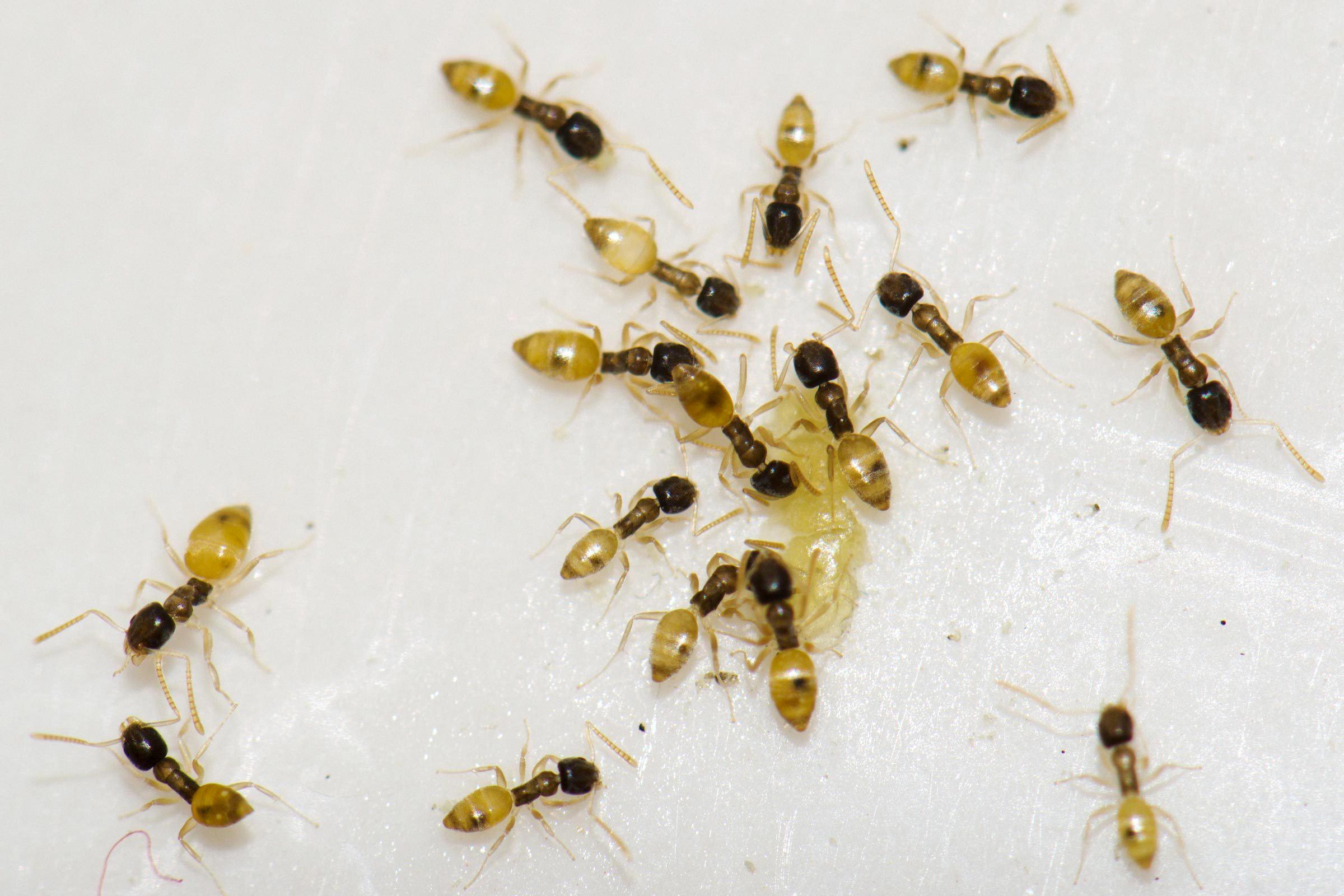
Do Ghost Ants Bite Humans?
Ghost ants (Tapinoma melanocephalum) are known to bite humans, although it is relatively rare and usually only occurs when their nest is threatened. When a ghost ant bites, it typically causes little discomfort and often leaves no visible evidence of the bite. However, in some cases, individuals may experience mild irritation, redness, or a small welt at the site of the bite.
Here are some key points regarding ghost ant bites:
1. Sting-free: Ghost ants do not have stingers, so their bites are their primary defense mechanism.
2. Non-aggressive behavior: Ghost ants are generally non-aggressive towards humans and only bite when they perceive a threat to their nest or colony.
3. Minimal pain: Ghost ant bites are usually not painful and may feel like a minor pinch or a slight prick.
4. Limited allergic reactions: Ghost ant bites rarely cause severe allergic reactions or significant swelling. However, individuals with hypersensitivity or allergies may experience more pronounced symptoms.
5. Swift bites: Ghost ants have quick biting action, allowing them to bite and retreat rapidly, making it challenging to spot the actual biting moment.
6. Disappearing bites: Due to their small size, ghost ant bites may not leave noticeable marks or visible signs of the bite. This can make it difficult to differentiate their bites from other insect bites.
7. Personal sensitivity: Each individual’s reaction to a ghost ant bite may vary, with some people being more sensitive and experiencing stronger reactions than others.
It’s important to note that ghost ants are primarily considered nuisance pests rather than harmful or dangerous. If you are experiencing a ghost ant infestation or are concerned about their bites, it is advisable to contact a professional pest control service for appropriate management and guidance.
Why Do I Have Ghost Ants?
Ghost ants, scientifically known as Tapinoma melanocephalum, are commonly found in homes and buildings. There are several reasons why these ants may be present in your home:
1. Food sources: Ghost ants are attracted to the food we provide in our homes. They have a diverse diet and feed on sugary substances, including fruits, syrups, and honey. They are also known to consume protein-based foods, such as meat, eggs, and even dead insects. If you have accessible food sources or crumbs left behind, it can attract ghost ants to your home.
2. Water sources: Like all living organisms, ants need water to survive. If there are leaky pipes, dripping faucets, or any other sources of water in your home, it can serve as an attraction for ghost ants. These ants are particularly drawn to moisture-rich areas, such as bathrooms, kitchens, and laundry rooms.
3. Nesting sites: Ghost ants are known for their ability to establish colonies inside homes. They prefer warm and humid environments, which is why they often nest in wall voids, behind baseboards, under sinks, and in other hidden areas. If your home provides suitable nesting sites with access to food and water, it increases the likelihood of ghost ant infestation.
4. Weather conditions: Ghost ants are tropical ants and thrive in warm and humid climates. If you live in an area with a warm and humid climate, it becomes more likely for ghost ants to be present. However, they can also infest homes in cooler regions if they find suitable conditions inside.
5. Structural openings: Ghost ants are tiny in size, allowing them to enter homes through small cracks, gaps, and openings in the structure. They can exploit even the tiniest of entry points, including gaps around windows, doors, utility lines, and utility entry points. Once inside, they can quickly establish their colonies and cause an infestation.
To effectively control and prevent ghost ants in your home, it is important to address these factors. Maintaining cleanliness, proper food storage, and eliminating water sources can help reduce their attractiveness. Sealing off entry points and conducting regular inspections can also help prevent their entry. If the infestation persists or becomes unmanageable, seeking professional pest control services may be necessary.
Why Are They Called Ghost Ants?
Ghost ants are given their name because they are extremely difficult to spot and identify due to their pale coloration and minuscule size. The name “ghost ant” is derived from their ability to seemingly appear and disappear like a ghost, making them elusive and hard to detect. These ants are native to tropical regions, and their origins are believed to be either African or Asian. The combination of their inconspicuous appearance and elusive behavior has led to their distinctive and fitting moniker, “ghost ant.”
Conclusion
Ghost ants are small, nonaggressive insects that are attracted to the food and water sources in our homes. They do not sting, but may bite if their nest is threatened. However, these bites are usually barely noticeable and do not pose any health risks to humans. The main concern with ghost ants is their potential to contaminate food. Due to their pale color and tiny size, they are difficult to see, hence their name. Ghost ants are believed to originate from tropical regions, possibly Africa or Asia. To prevent infestations, it is important to maintain a clean and hygienic environment, eliminating any food or water sources that may attract these pests.


